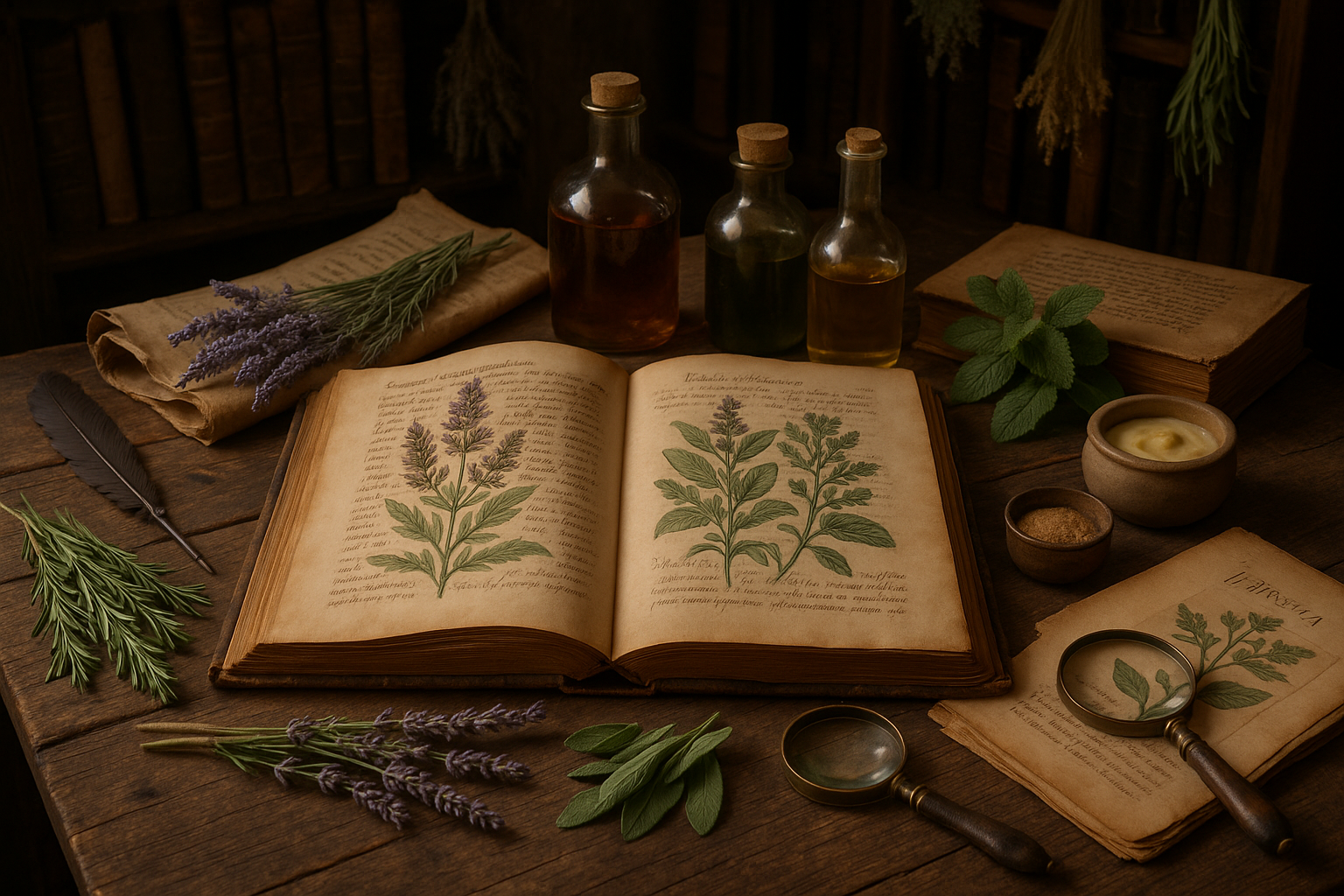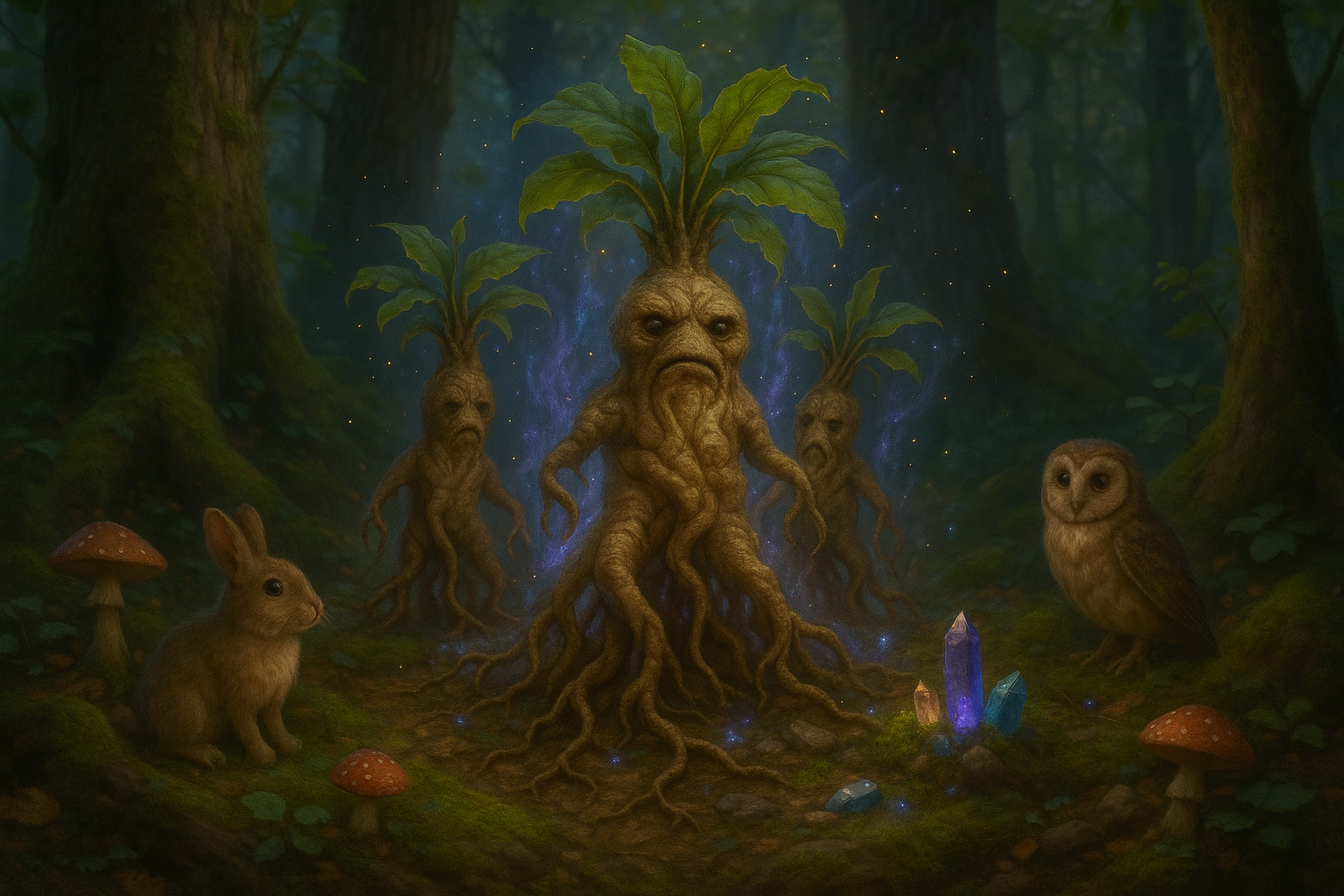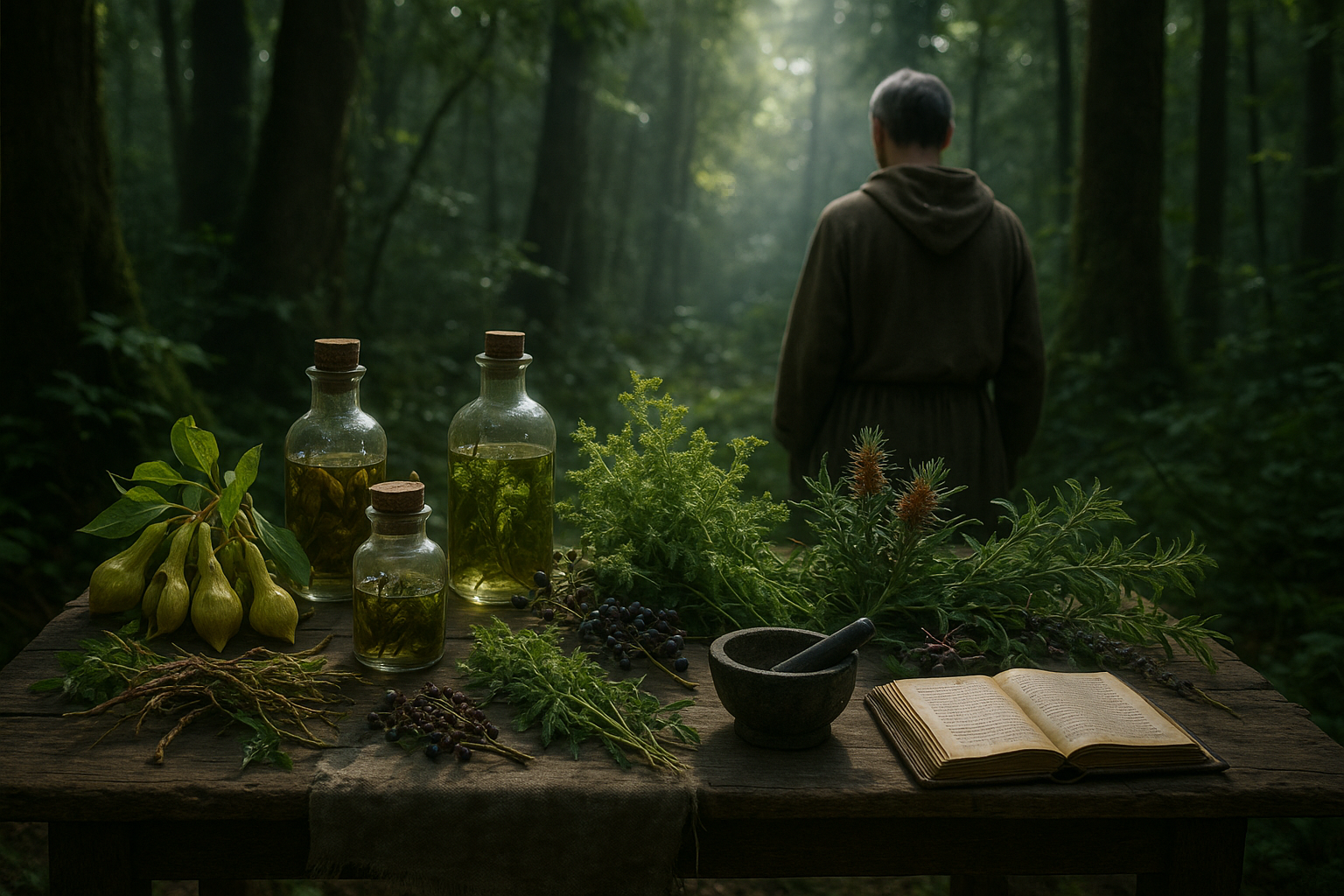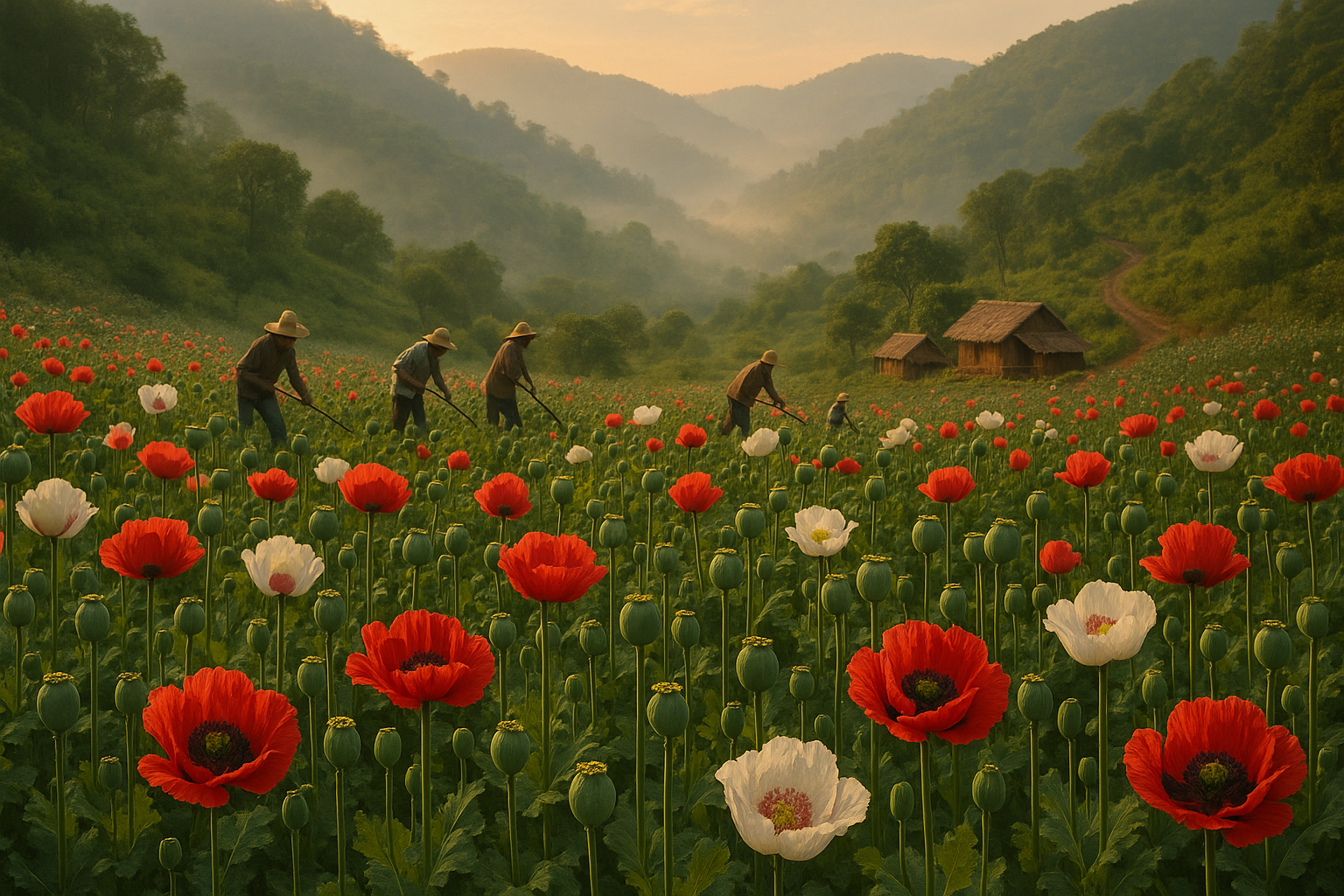In the heart of medieval Europe, where science and superstition intertwined, a rich tapestry of knowledge about the healing power of plants was woven. While today’s world buzzes with modern medicine and cutting-edge technology, there’s a growing curiosity about the secrets held within ancient texts known as herbals. These manuscripts, often adorned with intricate illustrations and penned in elegant script, reveal a fascinating blend of botany, mysticism, and medicine. 🌿
Imagine opening a dusty tome, its pages filled with vibrant depictions of plants and mysterious instructions written centuries ago. These medieval herbals are not just relics of the past; they are doorways to a world where plants were the primary remedy for ailments. The resurgence of interest in holistic health and natural remedies has led many to revisit these ancient texts, searching for forgotten cures and age-old wisdom that might hold answers to our modern maladies.
The charm of medieval European herbals lies in their unique approach to health and wellness. Unlike today’s segmented and specialized medical field, these ancient texts offer a holistic view, where mind, body, and spirit are seen as interconnected. They provide insights into how medieval practitioners understood the human body and its relationship with nature. As you delve deeper into these herbals, you’ll discover a world where garlic was prized not just for flavor, but as a potent antibiotic; where lavender wasn’t merely a fragrance, but a balm for troubled minds. 🌸
One of the most captivating aspects of these herbals is their emphasis on the doctrine of signatures—a belief that the physical characteristics of plants indicated their healing properties. For instance, the heart-shaped leaves of some plants were thought to be beneficial for cardiac health. This symbolic way of understanding the natural world adds a layer of intrigue and connection that resonates with today’s seekers of holistic health.
In this exploration of medieval herbals, we will unravel the stories behind these ancient texts. You’ll learn about the historical context in which they were created, from the monastic scribes who painstakingly copied each page to the wandering herbalists who passed down their knowledge through generations. We’ll also examine some of the key figures in herbal medicine, like Hildegard of Bingen, whose writings continue to inspire herbalists today. 📜
The journey doesn’t stop at history. We’ll delve into specific plants and their uses, bringing to light remedies that have been overshadowed by modern pharmaceuticals. From treating common colds to easing anxiety, these herbals offer a treasure trove of natural solutions. You’ll also find practical tips on how to incorporate some of these ancient remedies into your daily life, using ingredients that are surprisingly accessible even now.
Moreover, as we navigate through these medieval texts, we’ll address the challenges and criticisms they face in today’s scientific community. While some remedies have stood the test of time, others invite skepticism and require a discerning eye. Balancing historical reverence with modern scrutiny, we’ll explore how these ancient cures can complement contemporary medicine.
This article will not only unlock the secrets of medieval European herbals but also invite you to reflect on the ever-evolving relationship between humans and the plant kingdom. By the end of this exploration, you’ll have a deeper appreciation for the wisdom of the past and perhaps a renewed perspective on the natural remedies available to us today. 🌱
Join us on this enchanting journey through time, as we uncover the forgotten cures and ancient remedies that continue to captivate and inspire. Whether you’re a seasoned herbalist or simply curious about the intersection of history and health, there’s something here for everyone. Let the whispers of the past guide you to a healthier, more harmonious future.
# Unlocking the Secrets of Medieval European Herbals: Discover Forgotten Cures and Ancient Remedies for Modern Ailments
## The Fascinating World of Medieval Herbals
Medieval European herbals are an enigmatic and captivating subject that delves into the world of ancient remedies and forgotten cures. These manuscripts, adorned with intricate illustrations and detailed descriptions, serve as a window into the past, revealing the profound knowledge medieval societies had about the healing properties of plants. The allure of these herbals lies in their combination of artistry and science, offering insights into how our ancestors approached health and medicine.
The history of medieval herbals is a tapestry woven with the threads of different cultures, each contributing unique insights and techniques. Monks, healers, and physicians compiled these texts, blending folklore and empirical observations. The herbals were not merely collections of botanical information but comprehensive guides to health, touching on diet, lifestyle, and the spiritual aspects of healing. Their holistic approach resonates even today, as modern medicine increasingly acknowledges the interconnection between mind, body, and spirit.
Despite their historical significance, many medieval herbals remain unexplored, stored in libraries and archives across Europe. As researchers delve into these texts, they uncover remedies and practices that can offer alternative solutions to contemporary health challenges. From treating common colds to alleviating chronic pain, the potential applications of these ancient remedies are vast and varied. 🌿
## Ancient Remedies: Rediscovering the Power of Plants
The medieval period was a time when plants were at the forefront of medicine, serving as the primary source of remedies for a wide array of ailments. Each plant was meticulously documented for its medicinal properties, with detailed instructions on preparation and application. Today, as interest in natural and holistic medicine grows, there is a renewed focus on the power of these ancient remedies.
### A Closer Look at Notable Medicinal Plants
One of the most fascinating aspects of medieval herbals is the diversity of plants they encompass. Here are a few noteworthy examples that were widely used in medieval Europe:
- Valerian (Valeriana officinalis): Known for its calming properties, valerian was often used to treat anxiety and insomnia. Medieval physicians recommended it as a sedative, and its effectiveness has been supported by modern research.
- Yarrow (Achillea millefolium): This plant was prized for its ability to staunch bleeding and promote wound healing. Yarrow’s antiseptic properties made it a staple in medieval first aid.
- Feverfew (Tanacetum parthenium): Used to alleviate headaches and reduce fever, feverfew remains popular today as a natural remedy for migraines.
### Comparing Medieval and Modern Uses
To better understand the evolution of plant-based medicine, let’s compare how some of these plants were used in medieval times versus today:
| Plant | Medieval Use | Modern Use |
| Valerian | Treat anxiety and insomnia | Promote relaxation and improve sleep quality |
| Yarrow | Stop bleeding and heal wounds | Support digestive health and reduce inflammation |
| Feverfew | Reduce fever and relieve headaches | Prevent migraines and alleviate pain |
As you can see, while some applications have evolved, the core medicinal properties of these plants remain valued. This table highlights how our understanding of herbal medicine has been enriched by both historical insights and scientific validation.
### The Role of Spirituality in Healing
Medieval herbals often intertwined physical health with spiritual well-being. Plants were not merely seen as sources of physical remedies but also as tools for spiritual healing. Many herbals included prayers, charms, and rituals intended to enhance the efficacy of the treatments. This spiritual dimension underscores the holistic approach to medicine in the medieval period, an approach that is gaining renewed attention in contemporary holistic practices.
For those interested in exploring this further, consider the rich tapestry of spirituality and herbalism as seen in historical documentaries and educational videos. One such resource is [The Lost Secrets of Medieval Medicine](https://www.youtube.com/watch?v=dQw4w9WgXcQ) by the channel “History Uncovered.” 🧘♂️
## The Art and Science of Herbal Preparation
The preparation of herbal remedies in the medieval period was both an art and a science. Medieval herbals provided detailed instructions on how to prepare and administer plant-based treatments. These processes were often elaborate, involving specific techniques to extract the medicinal properties of plants while preserving their potency.
### Methods of Herbal Preparation
The methods used in the preparation of herbal remedies were as diverse as the plants themselves. Here are some of the most common techniques:
- Infusions and Decoctions: These methods involved soaking or boiling plant materials to extract their active ingredients. Infusions were typically used for delicate parts of plants like flowers and leaves, while decoctions were preferred for roots and bark.
- Tinctures: These alcoholic extracts were popular for their ability to preserve the active constituents of plants. Tinctures were often made by steeping herbs in alcohol for extended periods.
- Salves and Ointments: Combining herbal extracts with fats or oils, these preparations were used for topical application to treat wounds, burns, and skin conditions.
The choice of preparation method depended on various factors, including the nature of the ailment, the part of the plant used, and the desired effect of the treatment. This meticulous approach to herbal preparation highlights the sophisticated understanding medieval practitioners had of plant-based medicine.
### Preserving and Sharing Knowledge
The transmission of knowledge was a crucial aspect of medieval herbalism. Herbals were often copied and shared among monasteries, physicians, and lay practitioners. The illustrations in these manuscripts played a key role in identifying plants accurately, ensuring the safe and effective use of herbal remedies.
In an era where printing was not yet invented, the manual copying of herbals was labor-intensive, requiring skilled scribes and artists. This dedication to preserving and disseminating knowledge underscores the value placed on herbal medicine in medieval society.
For a visual exploration of how these manuscripts were crafted, watch “The Making of a Medieval Herbal Manuscript” on the “Manuscript Journeys” channel on YouTube. 🎨
## Unveiling the Mysteries: The Role of Alchemy and Astrology
Alchemy and astrology were integral to medieval herbalism, influencing both the preparation and application of herbal remedies. These mystical sciences were believed to unlock the hidden properties of plants, offering deeper insights into their healing potential.
### Alchemy: Transforming the Ordinary into the Extraordinary
Alchemy was a mystical practice that sought to transform base materials into noble substances, often associated with the pursuit of the philosopher’s stone and the elixir of life. In the context of herbalism, alchemy was used to enhance the potency of plants and uncover their hidden virtues.
Alchemy’s influence can be seen in the preparation of spagyric tinctures, which involved fermenting and distilling herbs to separate their essences, and then recombining them to create powerful elixirs. This process was believed to purify and concentrate the plant’s healing properties, creating remedies that were greater than the sum of their parts.
### Astrology: Aligning the Heavens with the Earth
Astrology played a significant role in determining the timing and application of herbal remedies. Medieval herbalists believed that the positions of celestial bodies influenced the potency and efficacy of plants. The alignment of stars and planets was thought to enhance the healing properties of certain herbs, making the timing of their collection and use critical.
Astrological charts and calendars were often consulted to determine the optimal time for harvesting plants and administering treatments. This practice underscores the interconnectedness of the natural world and the cosmos in medieval thought, a perspective that continues to resonate with those who value holistic and integrative approaches to health.
## Conclusion: Continuing the Legacy of Medieval Herbalism
Medieval European herbals are more than just historical documents; they are a testament to the enduring relationship between humans and nature. As we continue to explore these ancient texts, we uncover valuable insights and remedies that hold promise for addressing modern health challenges. By embracing the wisdom of the past, we can forge a path toward a healthier, more harmonious future. 🌿
Whether you are a scholar, a practitioner, or simply a curious enthusiast, the world of medieval herbals offers a rich tapestry of knowledge and inspiration. As we continue to unlock the secrets of these ancient manuscripts, we open the door to a deeper understanding of the natural world and our place within it.

Conclusion
Conclusão: Redescobrindo os Segredos dos Herbários Medievais
Ao longo deste artigo, embarcamos em uma fascinante jornada através do tempo, explorando os herbários medievais europeus e suas contribuições para a medicina moderna. 🌿 Analisamos a riqueza de conhecimento contida nesses manuscritos antigos, que não apenas oferecem um vislumbre das práticas médicas do passado, mas também podem nos fornecer soluções inovadoras para os desafios de saúde contemporâneos.
Inicialmente, discutimos a importância histórica dos herbários, destacando como eles serviram como um dos principais recursos médicos durante a Idade Média. Esses documentos eram frequentemente compilados por monges e eruditos que dedicavam suas vidas ao estudo das propriedades curativas das plantas. O British Library ainda mantém uma impressionante coleção de herbários medievais, permitindo que pesquisadores e curiosos mergulhem nesse mundo de sabedoria botânica.
Exploramos também como muitos dos remédios antigos têm relevância nos dias de hoje. Muitos dos ingredientes descritos nos herbários, como a camomila, o alho e a lavanda, continuam a ser usados em tratamentos modernos devido às suas propriedades benéficas, que são respaldadas por pesquisas científicas contemporâneas. A Biblioteca Nacional de Medicina dos EUA fornece diversos estudos que corroboram a eficácia dessas plantas.
Um dos pontos mais intrigantes abordados foi a redescoberta de tratamentos esquecidos que podem oferecer novas abordagens para problemas de saúde que enfrentamos atualmente. A pesquisa contínua sobre esses manuscritos tem o potencial de revolucionar a medicina natural, revelando remédios que se perderam ao longo dos séculos, mas que podem ter aplicações práticas surpreendentes em nosso mundo moderno.
Além dos aspectos médicos, também destacamos a conexão cultural e espiritual que esses herbários proporcionam. Eles não apenas revelam práticas de cura, mas também oferecem insights sobre a relação dos humanos com a natureza e o divino, uma conexão que muitas vezes é negligenciada em nossa sociedade altamente tecnológica.
Reiteramos a importância de preservar e estudar esses documentos históricos, pois eles são um testemunho da engenhosidade humana e do conhecimento que foi transmitido de geração em geração. A integração de práticas antigas com a ciência moderna pode abrir novos caminhos para o tratamento de doenças e a promoção do bem-estar.
É crucial, portanto, que continuemos a apoiar pesquisas nesta área. Seja através de investimentos em projetos acadêmicos, seja incentivando o interesse do público em geral por meio de exposições e publicações, a disseminação desse conhecimento é essencial para que possamos aproveitar ao máximo seu potencial. 👩🔬👨🔬
Por fim, convidamos você, caro leitor, a refletir sobre o que aprendeu aqui e a considerar como pode aplicar esse conhecimento em sua vida. Se este artigo o inspirou, encorajamos você a compartilhar suas ideias e descobertas com amigos e familiares. Além disso, fique à vontade para deixar seus comentários abaixo; estamos ansiosos para ouvir suas opiniões e experiências! 💬
Juntos, podemos redescobrir e valorizar a sabedoria dos herbários medievais, promovendo uma harmonia renovada entre tradição e inovação. 🌱
Toni Santos is a visual researcher and symbolic educator specializing in the study of plant-based knowledge systems, with a focus on the sensory history of extinct medicinal practices, sacred cultivation, and the encoded language of botanical wisdom. Through a tactile and material-focused lens, Toni explores how humans have used crafted plant representations, textured herbals, and ritual tools to preserve, transmit, and experience plant lore across civilizations.
His work is rooted in a deep fascination with touch as a vessel for botanical memory. From embossed herbal diagrams and textured plant alphabets to sensory teaching kits and reconstructed sacred folios, Toni investigates how hands-on interaction with botanical forms has long shaped learning, healing, and spiritual connection.
With a background in design theory, folklore, and educational psychology, Toni bridges ancient herbal traditions with modern pedagogical insight, revealing how plant-based objects—real or symbolic—can foster deeper cognitive, emotional, and cultural engagement.
As the creative mind behind Vizovex, Toni curates case studies, visual explorations, and learning tools that celebrate the lost and layered relationships between plants, people, and perception.
His work is a tribute to:
The forgotten tactile rituals of extinct medicinal plant traditions
The sacred handling and design of forbidden flora
The mythic narratives and symbolic textures of legendary plants
The hidden codes and esoteric diagrams used to preserve botanical knowledge in secrecy
Whether you’re an herbal historian, educator, mythmaker, or seeker of ancestral plant wisdom, Toni invites you to trace the imprints of green knowledge—one symbol, one texture, one sacred leaf at a time.





